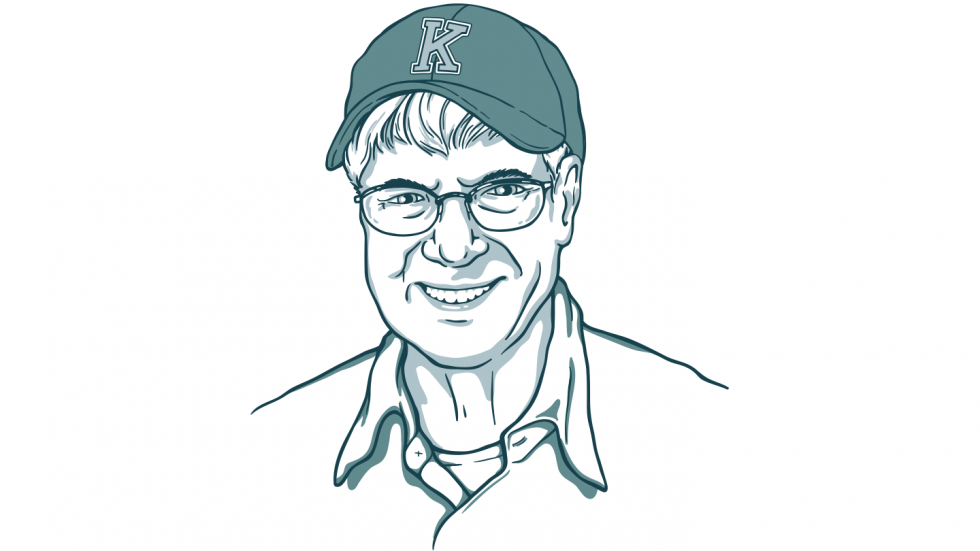Eighty Years On
As the Kenyon Review celebrates a milestone birthday, the Bulletin explores how the storied journal became a leading…
Read The StoryStephen Wachtel ’59 P’87 has worn multiple hats — scientist, painter and jazz musician among them.

After graduating from Kenyon in 1959, Stephen joined the Air Force and served as an instructor pilot for seven years. He went on to earn a doctorate in medical genetics (specifically, the genetics of tissue transplantation), and worked at Sloan-Kettering Institute in New York City, with a joint appointment at the Cornell Medical School. A job offer took him to Memphis, where he ran a genetics center at a cattle ranch. He retired as a professor of obstetrics and gynecology and chief of reproductive genetics at the University of Tennessee Health Science Center in 2006, and ever since, he has focused on his art: primarily music and painting (his paintings are online at shoel-art.com). The Bulletin asked this inspiring octogenarian to tell us how he juggles it all.
Q: What inspires your painting?
I’ve actually spent time as a professional photographer, so when I see something, I put a frame around it and I say, “Would that be a good painting?” When I was in the Air Force, occasionally I would get a duty where you sit at the end of the runway in a little truck with a glass top, and you direct student traffic. It was called “mobile control.” When we did that, we would have a lot of time after the aircrafts took off. I used to sketch a lot in those days, and those sketches often turned into paintings.
It sounds like you’ve turned a hobby into a second career.
My paintings are more than just a hobby. I’ve done a lot of shows in Memphis and I’ve got paintings hanging all around town at various venues. I was very fortunate that one of my paintings was purchased by the Guardsmark Collection. There’s a museum in town that also bought a couple of my paintings. Things are going well. I also play music and I get paid for that, but you can’t survive just playing music anymore, unless you’re someone like Prince or Michael Jackson (when they were living).
How did you break into the Memphis music scene?
A friend of mine knew that I played the saxophone and clarinet and invited me to participate in a weekly event that went on downtown. I went down and tried my hand at the blues, and I was pretty terrible, but that was my start. I just started playing a lot of music, and eventually started playing with some really good musicians. One thing lead to another, and I became adept at playing jazz and blues. Over the years, I appeared on stage with Rufus Thomas, Ruby Wilson, Charlie Musselwhite, Blind Mississippi Morris, Charles (“Skip”) Pitts, Ben Cauley and many others. I still play a few times a week.
What advice would you give recent or soon-to-be Kenyon graduates?
Good things will happen if you keep a smile on your face and follow your heart. As I get older, one of the things I think about is, what will last when I’m gone? Music is something that can last, if there are recordings. Even a moment — a good piece of improvisation in a jazz piece — someone’s going to hear that and remember it. If you leave a book or poetry or paintings, it will survive you. And that’s a good feeling.
This interview was edited for length and clarity.
As the Kenyon Review celebrates a milestone birthday, the Bulletin explores how the storied journal became a leading…
Read The StoryWhat will it take to boost socioeconomic diversity at Kenyon? And why does it matter?
Read The StoryThese students are living their dreams and claiming their places in the workforce.
Read The Story